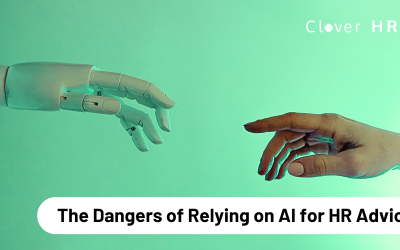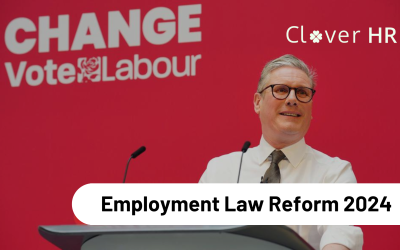Feeling confident and doing well in an interview starts with preparation and a great interview outfit you feel comfortable in. Unfortunately, with the variety of dress codes, you may not know where to start. Read our guide to learn about the ideal interview outfits for men and ace your first impression.
Why Dressing Appropriately is Vital?
When interviewing for a new job, you want to impress the hiring manager. If you cannot meet their dress code, they are unlikely to believe you can meet their daily expectations. The correct outfit shows that you have been diligent. You have researched the company, culture and industry and can fit in smoothly.
How to Determine the Dress Code
Assessing the interview formality and researching the industry and company culture shows you are keen to fit in. Though we often do not realise it, it can be uncomfortable when two people’s formality clashes, so you must meet the dress code of the business you are interviewing with. When you receive that exciting invite, take note of the detail, paying particular attention to anything you need to do ready for the interview and what the formality is. Is it going to be a formal interview at the company offices, or is it more of an informal chat over a coffee in a local café? It helps you decide what to wear and ensures you do not underdress or overdress.
Dress Codes By Industry
You can follow some rules of thumb depending on the industry you are job seeking in. Finance, Law and corporate environments almost always demand a business formal dress code. You should wear a dark suit in grey or navy, black shoes, a white shirt and a simple tie. If you are looking for a role in Government, Sales, Hospitality and Management, go for Business attire. A smart shirt and smart trousers or chinos work well for these industries. Then you can top it off with a well-cut blazer for the final professional touch. A smart-casual dress code is appropriate for more informal creative or technical sectors like Technology, Creative, Construction, Factory and Engineering roles. Go for dark, tailored jeans or chinos and a shirt. Then you can add a smart-casual blazer, fitted jacket or jumper for layering.
Research
Be sure to research the industry for the typical dress code expectations, and get to know the company as best you can – you’ll want to impress whilst looking like you will fit easily. You can always ask the hiring manager for clarification so that you know what they expect from you.
The Best Garments to Wear at an Interview
By choosing some interview outfit staples, you can give the best impression when you meet the hiring team. We recommend wearing:
1. A Suit
A suit has long been the gold-standard interview outfit choice for men. Dark colours like grey and navy are perfect. Pay careful attention to the fit; it speaks volumes about your attention to detail. You can ask the shop assistant’s advice or take an off-the-rack suit to a tailor for fine adjustments like a trouser hem.
2. A Smart Shirt
Shirts are always the best option for an interview. If you are wearing a suit and tie for a business formal dress code, choose a well-fitting white option, potentially with double cuffs to add cufflinks. If the dress code is more casual, you can opt for a pale colour like blue or pink or a simple stripe or check pattern. An Oxford shirt is always a great choice
3. A Tie
Many people think ties are dying out in business attire, but they still have value in formal settings. If the dress code says business smart or business formal, that means wearing a tie. Always choose a conservative design. Traditional stripes, small patterns or solid colours are your best friends. Novelty ties are rarely ever appropriate, so stay away.
4. Chinos
A business attire staple, chinos perfectly straddle the middle ground between jeans and formal trousers. Although bold colours can be tempting, tan, stone and navy are the best choices as they go with almost anything.
5. A Blazer
If chinos are the perfect trouser, a blazer is their ideal match. Navy is our stand-out choice as it goes with anything. A good rule of thumb is pairing a light chino with a dark blazer and vice versa. A darker blazer is always more formal. As with a suit, the fit is everything, so take the time to try on different options. A good jacket should gently hug the body without feeling restrictive. You can always bring it in if it is a little big; you cannot let it out if it is too small.
6. Smart Shoes
Shoes are one of the first parts of your outfit that people will look at, and a well-made pair is an investment that can last a lifetime. In formal interviews, always choose a black leather pair. Oxfords are ideal. In business casual scenarios, we recommend brown. You can go for either leather or suede and try brogues, derbies or loafers. Keep your shoes in good condition. Not only does polishing them show the hiring manager that you took the time to prepare for the interview, but it will also maintain them for longer, so you get more wear out of one pair.
7. A Belt
You should always tuck in your shirt for an interview so that a belt will complete the outfit. Choose a simple buckle, nothing with branding, and match the belt’s colour to your shoes, black and black, brown and brown. If your belt is worn, it is time to get a new one.
8. Layers
In the colder months, you often need to add layers to your interview outfit for warmth. In a business casual interview, you can add a smart jumper over your shirt. In formal settings, go for a dark overcoat.
Garments You Should Not Wear to an Interview
You should avoid wearing certain items to an interview, as they are unprofessional compared to the options mentioned above.
Ill-Fitting Clothing
Always take the time and care to get the right fit. Ill-fitting items can convey that you miss details and are not concerned with presentation. Plus, well-cut clothing looks a lot better.
Items that Do Not Suit the Dress Code
Wearing the incorrect dress code shows a lack of research. If you are interviewing at a casual creative agency, you will probably be overdressed in a three-piece suit. Likewise, jeans will not sit well in a banking interview. You can learn about the industry standard online, ask the hiring manager you are in contact with or call the office for clarification.
Bright Colours
Subdued colours are always best as they pair well and do not stand out. Bright colours can distract from your messages.
Bold or Novelty Patterns
Novelty items and bold designs are often unprofessional and can give the wrong impression. Conservative choices are always better.
Tips to Make Your Interview Outfit Perfect
Here are some extra considerations when choosing your attire:
Keep it Simple
You can easily get stressed trying to do too much. When in doubt, go simple. The ideal outfit probably only has four garments: a shirt, trousers, a blazer and smart shoes. Matching colours is challenging. Choosing too many risks clashes and drawing attention away from your answers. A good rule of thumb is to combine three that go well together. You can use a colour wheel or search for inspiration online if you are unsure.
Accessorise Conservatively
Accessories can often be overdone, but when chosen carefully, they can tell the interviewer a lot about yourself. An understated watch, for example, shows that you are conscious about time-keeping. A simple ring and classic cufflinks are also excellent details.
Iron Your Clothes
Creases can cost you a crucial first impression. Ironing your clothes helps them fit your body and shows you care about minute details.
Polish Your Shoes
Polished shoes show that you take pride in presentation, so make your shoes shine. If you are wearing suede shoes, clean and gently brush them.
Maintain Good Hygiene and Grooming
Just as you think about your clothing, think about your appearance too. A haircut and beard trim gives a professional aesthetic; go for a tidy style. Tie long hair back neatly. Then take care of your personal hygiene.
Try Everything on in Advance
Try on your outfit a few days before your interview to see how it feels. If you do not often wear your suit, for example, and it does not quite fit as it used to, you can source an alternative. Give yourself time; the shops may not be open the night before. If everything looks good, and you feel comfortable and confident, you are ready to go.
Your Outfit is Sorted – What Next?
Nailing some answers to typical interview questions and recalling specific examples of your best work helps you feel confident going in. Make some notes as a prompt in case your mind goes blank – it happens to us all – and talk in your own words rather than memorising stock answers you’ve found online. There are some common interview questions that it would be good to prepare for ahead of your interview. You might be asked:
- Tell us about yourself
- Why did you choose to apply to our organisation?
- What skills do you bring to the role?
- What do you think are the key skills needed to make you successful in the role?
- What are your strengths and areas of development? – always provide some weakness you would like to work on as interviews do not expect you to be perfect
- How would you approach your first month in the role?
There may also be some situational and technical questions specific to the role you’re applying for, so it is useful to consider some examples of how you could answer them. Try structuring your answers using the STAR method – what was the Situation, what was the Task you needed to achieve, what Action did you take, and what were the Results? Prepare some questions for the interviewer; it shows you’re interested and keen to learn as much as possible about the role and company. Dressing in something that makes you feel great and preparing for an interview really boosts your confidence – now all that’s left to do is go in there and smash it!
Our Recruitment Services
If you need help finding and landing your dream role, our recruiters can help. We can audit and optimise your CV, uncover the ideal positions, liaise with the hiring manager to highlight your skills and help you prepare for the interview. Our experts are friendly, attentive and ready to help you in any way possible. Contact us today to find a job you love.
FAQ
What should men wear to a job interview in the UK? The business’s dress code will inform your outfit. If they are business formal, wear a dark suit, black shoes, a smart shirt and a tie. If they ask for business attire, go for smart trousers or chinos, a shirt, smart shoes and a blazer. If they ask for business casual, wear dark tailored jeans or chinos, neat white trainers or smart shoes, a shirt and a jumper. Is a polo shirt acceptable for a job interview? It depends on the dress code. If it is business casual, a well-fitting, plain polo shirt will be appropriate in warm weather. However, a shirt is a better option. What should men wear to a casual job interview? A casual interview does not refer to the dress code. Wear business casual: smart trousers or chinos, a shirt, smart shoes and a blazer.


